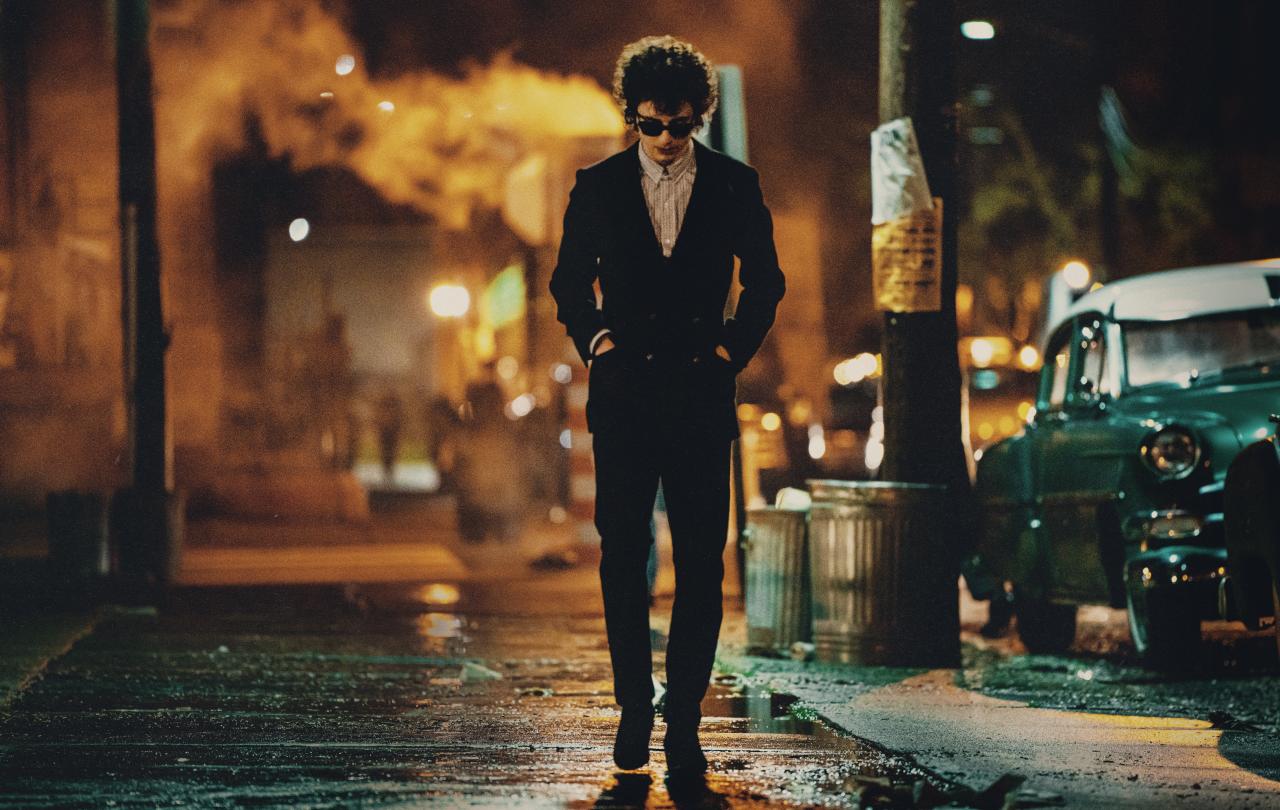From folk icon to electric rebel
This transformative moment in Dylan’s career is drawn from the book Bob Dylan Goes Electric. Much like Titanic or Finding Nemo where the climax is inevitable from the outset, the audience is well aware of what is coming: Dylan’s controversial decision to “go electric.”
We begin by meeting Dylan as a young folk singer, heavily influenced by legends like Woody Guthrie and Pete Seeger. Arriving in New York as an ambitious teenager, he’s welcomed and mentored by the folk music community. These relationships form the foundation of his early career, but they also set the stage for heartbreak.
The climax unfolds at the Newport Folk Festival, where Dylan debuts an electric set, shattering the expectations of his folk audience. Fans and mentors alike react with outrage—booing, throwing objects, and accusing Dylan of betraying the authenticity of true folk music. By the film’s end, Dylan, despite his eventual electrifying musical success, is no more popular – he has burned nearly every bridge, leaving a trail of fractured relationships.
True to its title, A Complete Unknown offers no answers. Dylan’s motives remain elusive, and the audience is left with more questions than insights. It’s a daring narrative choice—presenting a guarded character who remains enigmatic to the end. There’s no traditional character arc, no emotional revelation, no intimate a-ha moment. The film respects Dylan’s mystique but denies the audience the catharsis they might expect from a biopic.
Other biopic producers seem to be following suit. In efforts not to be formulaic they are choosing a more lackadaisical approach to audience expectations. In the upcoming Better Man which retells Robbie William’s life story, the singer is presented as a CGI ape. Pharell Williams’ life story is being retold through LEGO. If James Mangold, the director, who also co-wrote the screenplay with Jay Cocks was deliberately trying to subvert the genre, it seems he may have succeeded.





